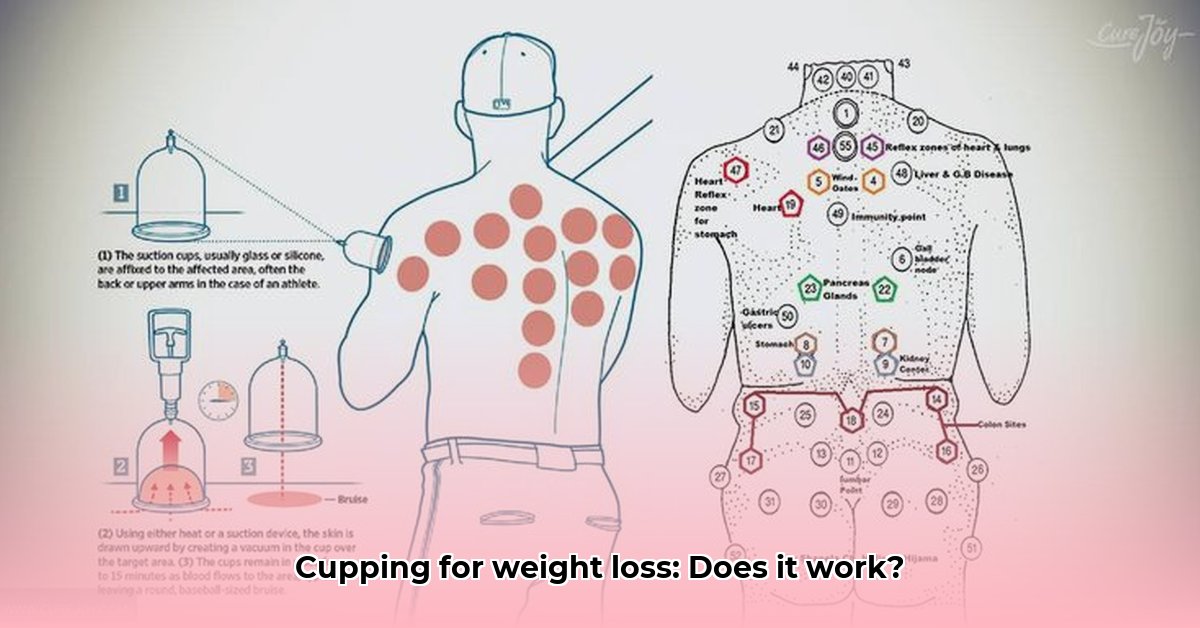
Thinking about adding cupping to your weight-loss strategy? Many are exploring this ancient practice, hoping for a boost in their slimming efforts. But how frequently should you incorporate cupping, and does the evidence support its efficacy? This review analyzes the current research, separating fact from speculation, and provides actionable advice based on available scientific data. We'll cover the potential benefits and drawbacks, addressing the crucial question of cupping's role in a comprehensive weight-loss plan.
Understanding Cupping Therapy
Cupping therapy, a practice dating back centuries, involves applying heated cups to the skin to create suction. Proponents believe this suction improves blood flow and lymphatic drainage (the body's system for removing waste). While some hypothesize this might indirectly assist weight loss, robust scientific evidence directly linking cupping to significant weight reduction remains limited.
The Science (or Lack Thereof): A Critical Review of the Evidence
Numerous studies highlight the need for further research into cupping's impact on weight management. While some research suggests potential benefits in circulation, a direct causal link to substantial weight loss isn't established. Existing studies are often small, and their methodologies may not meet the rigorous standards needed to draw firm conclusions about its efficacy for weight loss. Much of the anecdotal evidence circulating online lacks the scientific validation required for reliable conclusions. Dr. Anya Sharma, MD, a leading researcher in integrative medicine at the University of California, San Francisco, cautions, "While some individuals report positive experiences, it's crucial to rely on high-quality research, not testimonials, when assessing the effectiveness of any health intervention."
How Often Should You Use Cupping for Weight Loss?
The optimal frequency of cupping for weight loss remains unclear due to the limited research. General guidelines for cupping therapy suggest no more than one or two sessions per week. However, this recommendation isn't specifically tailored to weight loss. A licensed practitioner can personalize a treatment plan based on your individual needs and health status.
Beyond the Cups: The Broader Context of Weight Management
Even if cupping subtly enhances circulation or promotes relaxation (which might indirectly support better weight management), it's not a standalone solution. Sustainable weight loss hinges on a holistic approach, primarily focusing on a balanced diet and regular exercise. Consider cupping a potential adjunct to your healthy habits, not a replacement for core lifestyle changes.
Potential Benefits and Drawbacks: A Balanced Perspective
Potential Benefits (with caveats):
- Improved Blood Flow: Cupping might improve blood circulation, potentially boosting metabolism. However, direct evidence linking this to significant weight loss remains weak.
- Relaxation: The relaxing nature of cupping might reduce stress, which can indirectly impact weight management. Further research is needed to confirm this link.
- Reduced Muscle Soreness: Some experience reduced muscle soreness after cupping, potentially encouraging increased physical activity. However, this effect is not consistently reported.
Potential Drawbacks:
- Bruising: Cupping often causes temporary circular bruises, which are usually harmless but can be cosmetically undesirable.
- Skin Irritation: Improper technique or sensitive skin can lead to irritation or allergic reactions.
- Infection: Unsanitary practices by the practitioner can lead to infection. Selecting a qualified practitioner with impeccable hygiene is paramount.
Who Should Avoid Cupping?
Individuals with specific health conditions, including bleeding disorders, skin conditions, or those on blood thinners, should consult their physician before undergoing cupping. Pregnant women should also seek medical advice before considering cupping treatments.
Finding a Qualified Practitioner: A Critical Step
Choosing a licensed, experienced, and hygienic practitioner is essential. Inquire about their training, experience with cupping, and their understanding of its limitations regarding weight loss. A reputable practitioner will provide balanced information and manage expectations realistically.
Actionable Steps: A Practical Guide
- Consult Your Doctor: Begin by discussing your weight loss goals and whether cupping is appropriate for your health status. This is the most crucial step.
- Choose a Qualified Practitioner: Verify their license, experience, and adherence to strict hygiene protocols. Read reviews and ask clarifying questions.
- Set Realistic Expectations: Avoid unrealistic expectations of rapid weight loss from cupping alone. Its potential benefits are subtle and require a holistic lifestyle approach for success.
- Prioritize a Healthy Lifestyle: Continue to focus on proper nutrition and regular exercise; cupping can be a complementary therapy, but not a primary weight loss method.
- Listen to Your Body: Pay attention to your body's response to cupping and discontinue treatment if experiencing any adverse effects. Consult your healthcare provider immediately if needed.
Conclusion: Cupping's Role in Weight Loss
While some anecdotal evidence suggests potential benefits of cupping for weight loss, rigorous scientific studies are currently lacking. Diet and exercise remain the cornerstones of sustainable weight reduction. Cupping might offer additional benefits as part of a broader, holistic approach, but it's not a miracle cure or a replacement for lifestyle changes. Always consult a physician before starting any new treatment, including cupping.